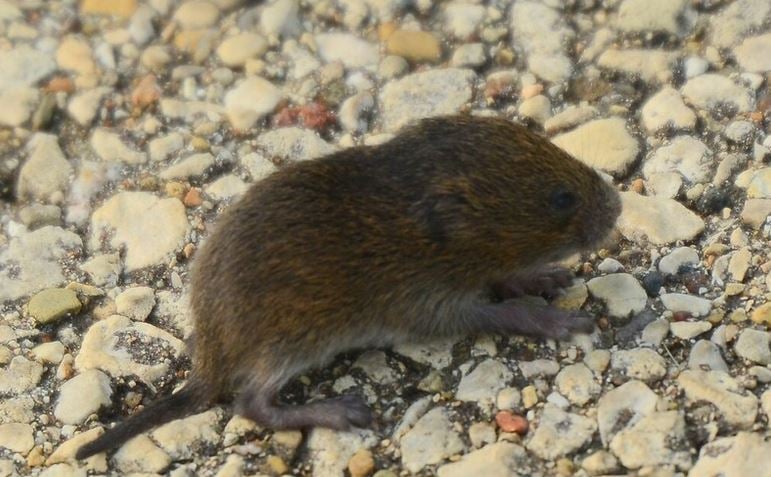Safeguard Your Yard: Efficient Vole Control Techniques
Safeguard Your Yard: Efficient Vole Control Techniques
Blog Article
Grasping Vole Bug Control: Extensive Insights on Invasion Prevention and Treatment Techniques
By identifying the subtle signs of vole problem early on, we can take positive measures to protect against extensive damage. In this conversation, we will explore the subtleties of vole habits, delve right into the recognition of invasion indicators, and reveal the most effective prevention and therapy techniques.
Recognizing Vole Habits
Taking a look at the foraging patterns of voles offers useful understandings into their habits and environment preferences. By observing their foraging actions, researchers can get a better understanding of where voles choose to develop their habitats and the extent of their ecological influence.
Research indicates that voles display discerning feeding habits, choosing origins, seeds, and tubers. This nutritional preference influences their foraging patterns, leading them to areas rich in greenery and ground cover. Furthermore, voles are recognized to develop fancy tunnel systems for foraging and nesting functions, showing a high level of versatility to their surroundings.
Comprehending vole behavior is essential for executing targeted bug control actions that interrupt their habitat choices and foraging tasks (vole control). By examining their behavior, professionals can develop more reliable prevention and treatment strategies to take care of vole invasions

Identifying Indicators of Vole Invasion
Vole infestations can be spotted by recognizing specific indications of their existence in an area. Among the most common indicators of a vole invasion is the presence of surface area runways. Voles create networks of slim pathways on the ground that are generally around two inches wide. These paths are commonly found in verdant areas or beneath compost or ground cover where voles can move openly and look for food.
Another crucial indicator of vole invasion is the visibility of little burrow openings in the ground. Voles dig superficial burrow systems with multiple entryways and leaves. These burrows act as shelter and nesting websites for the voles. Additionally, voles are understood to leave chewed plant stems, roots, and light bulbs near their burrow openings, indicating their feeding activity in the location.
Additionally, vole droppings can additionally represent their existence. Vole droppings are tiny, brown, and round fit, resembling grains of rice. Discovering these droppings along paths or near burrow openings can validate a vole problem. By being alert for these indicators, residential or commercial property owners can quickly attend to vole problems and prevent further damage.
Executing Positive Prevention Steps

Additionally, employing all-natural vole deterrents like castor oil-based repellents or killer urine can work as efficient preventative steps. It is additionally recommended to regularly check exterior areas for any kind of signs of vole activity, such as paths or burrow openings, to attend to possible infestations immediately. vole yard damage. By adopting these proactive avoidance approaches, home proprietors can significantly decrease the chance navigate to this site of vole damage and maintain the health and wellness and visual appeals of their landscapes
Efficient Therapy Approaches
Integrating targeted trapping methods and making use of accepted rodenticides are necessary elements of reliable therapy techniques for managing vole problems. Routine monitoring and upkeep are likewise crucial aspects of effective treatment strategies to make certain that vole populaces are kept under control. By incorporating trapping, rodenticides, environment alteration, and constant monitoring, efficient vole pest control can be attained.
Tracking and Upkeep Tips
Normal surveillance allows for the early detection of vole activity, allowing timely treatment prior to problems get worse. To effectively monitor vole populations, tactically put traps can be used in vole paths or near burrow entryways.
In addition, keeping a tidy and well-kept landscape is essential in vole prevention. Clearing away debris, such as piles of wood or thick vegetation, removes possible vole environments. Regularly trimming and trimming grass plant life helps in reducing vole concealing places and minimizes their accessibility to food resources.
In addition, recurring upkeep of physical obstacles, such as fences or wire mesh, is vital to avoid vole breach. Evaluating and fixing any type of damages to these frameworks makes certain that vole control continues to be efficient in protecting properties from problems. By including these tracking and maintenance methods into a thorough vole parasite control strategy, individuals can effectively take care of vole populaces and safeguard their residential or commercial properties from damages.
Final Thought
To conclude, mastering vole pest control view it calls for a strong understanding of vole behavior, the capacity to determine indicators of invasion, executing aggressive prevention measures, reliable treatment approaches, and constant monitoring and upkeep. By taking an extensive approach to vole control, individuals can effectively handle and avoid problems, eventually shielding their building and surrounding environment from damage created by these little rats.
In this discussion, we will certainly explore the subtleties of vole behavior, delve right into the identification of invasion indications, and uncover the most effective avoidance and treatment techniques.Including targeted capturing techniques and making use of approved rodenticides are necessary components of efficient therapy strategies for taking care of vole infestations. To successfully monitor vole populaces, purposefully placed traps can be used in vole paths or near burrow entries. Inspecting and repairing any check over here damages to these structures makes sure that vole control continues to be reliable in safeguarding residential properties from problems. By including these surveillance and upkeep techniques right into a thorough vole pest control plan, individuals can efficiently handle vole populations and safeguard their residential properties from damages.
Report this page